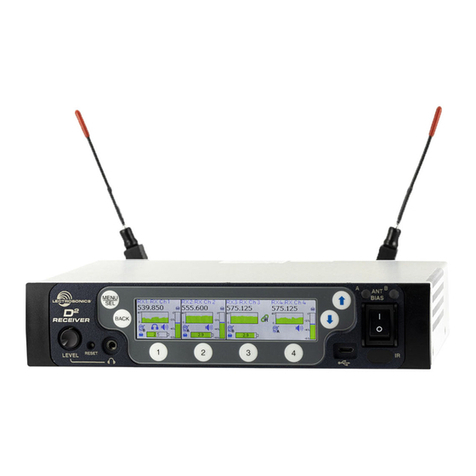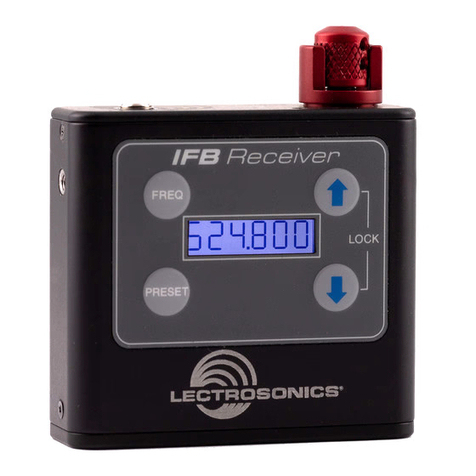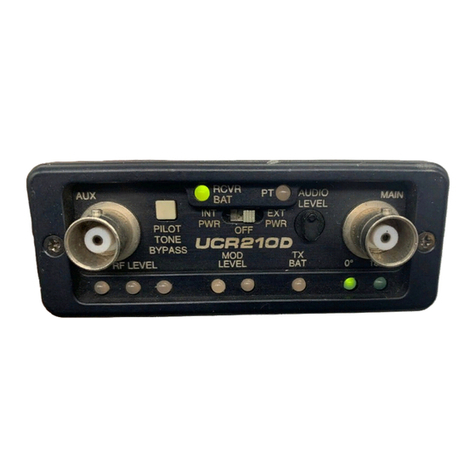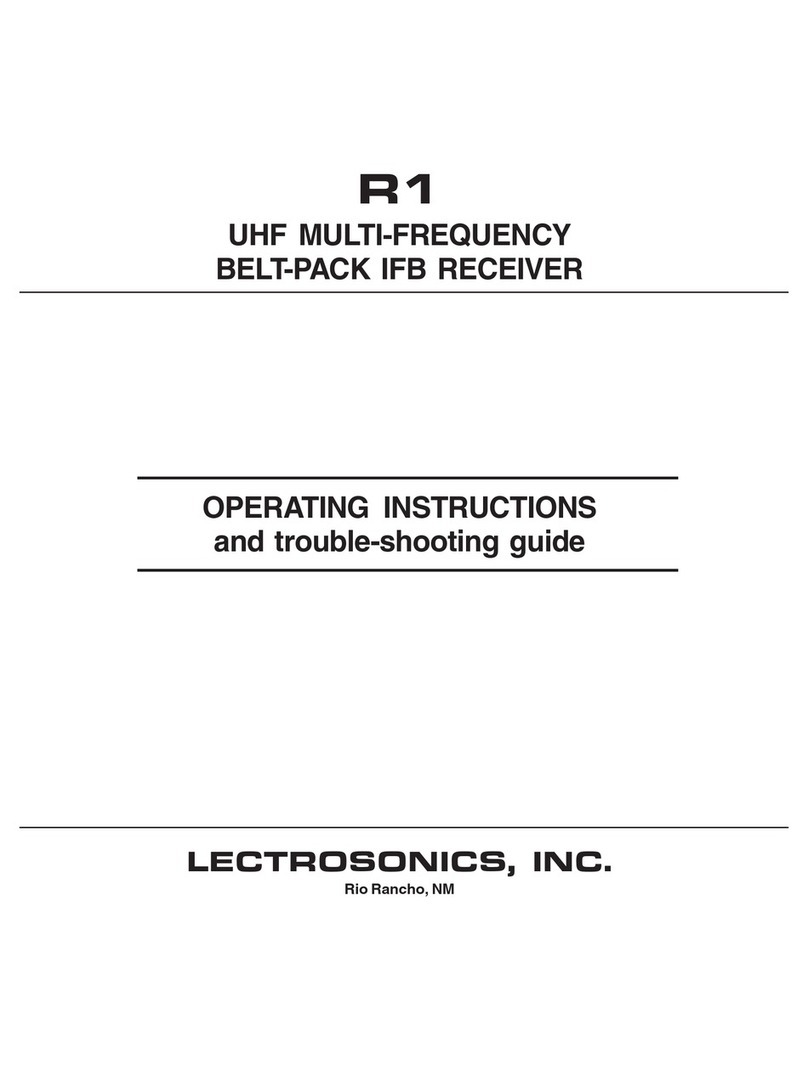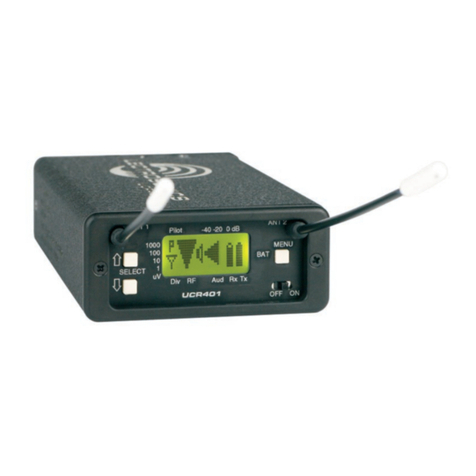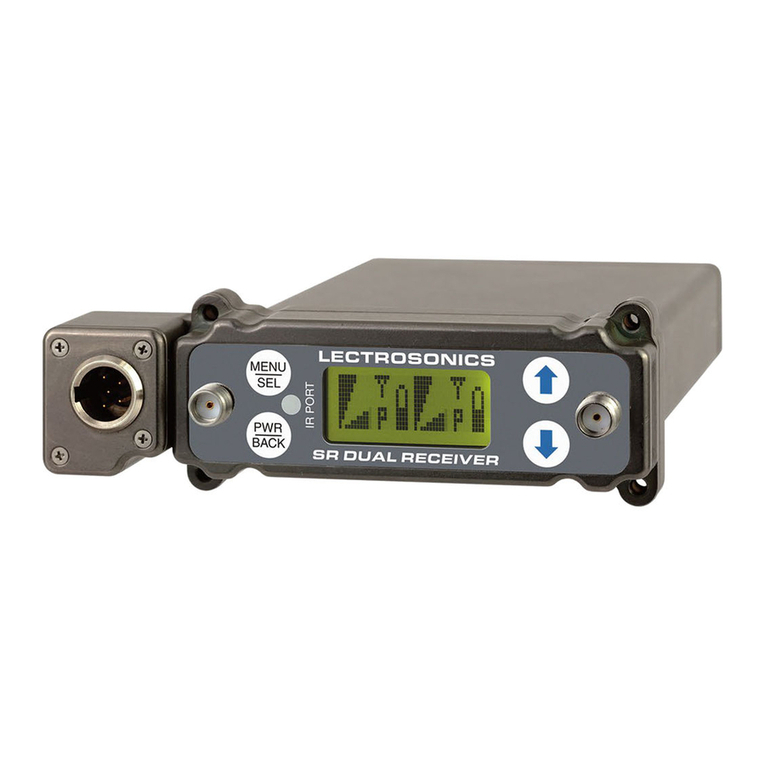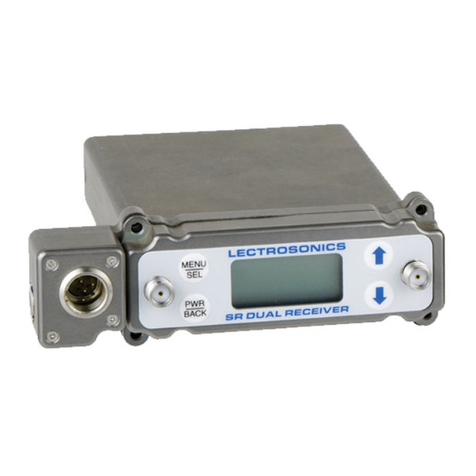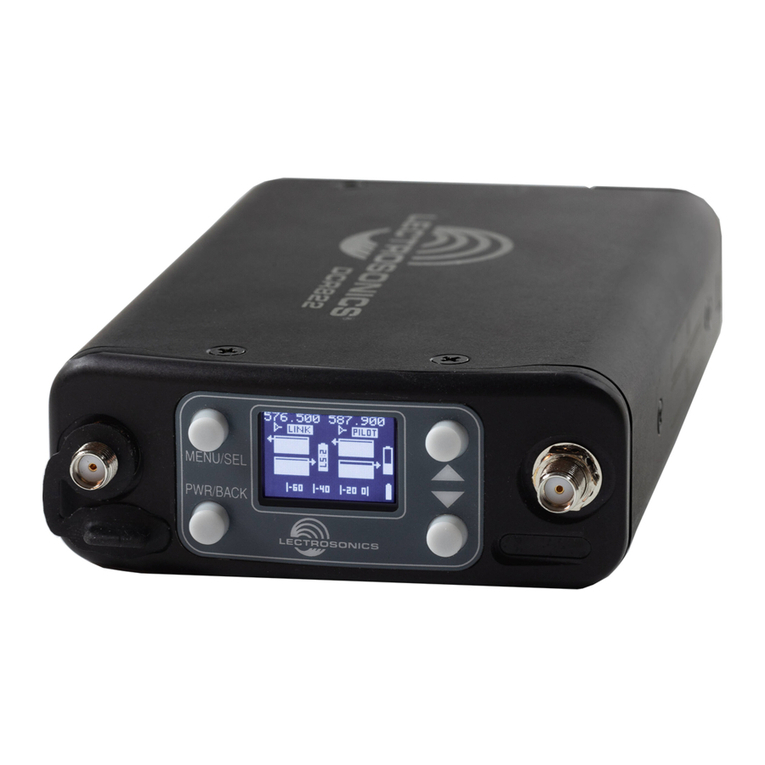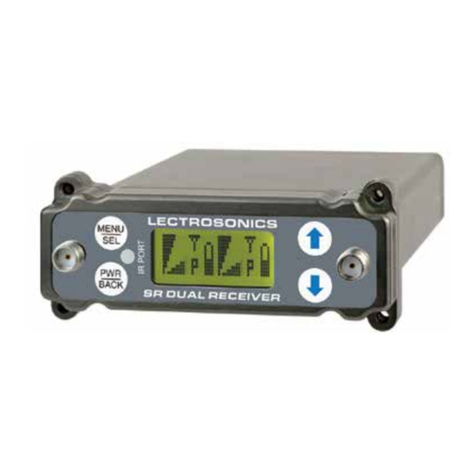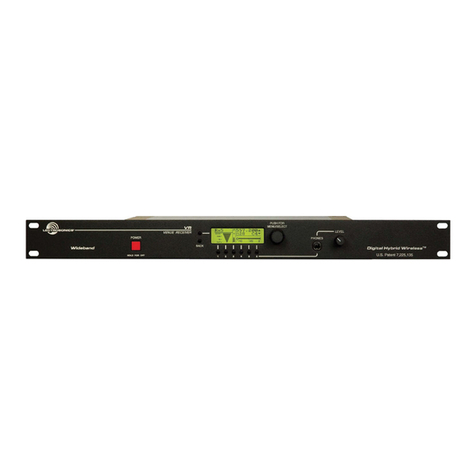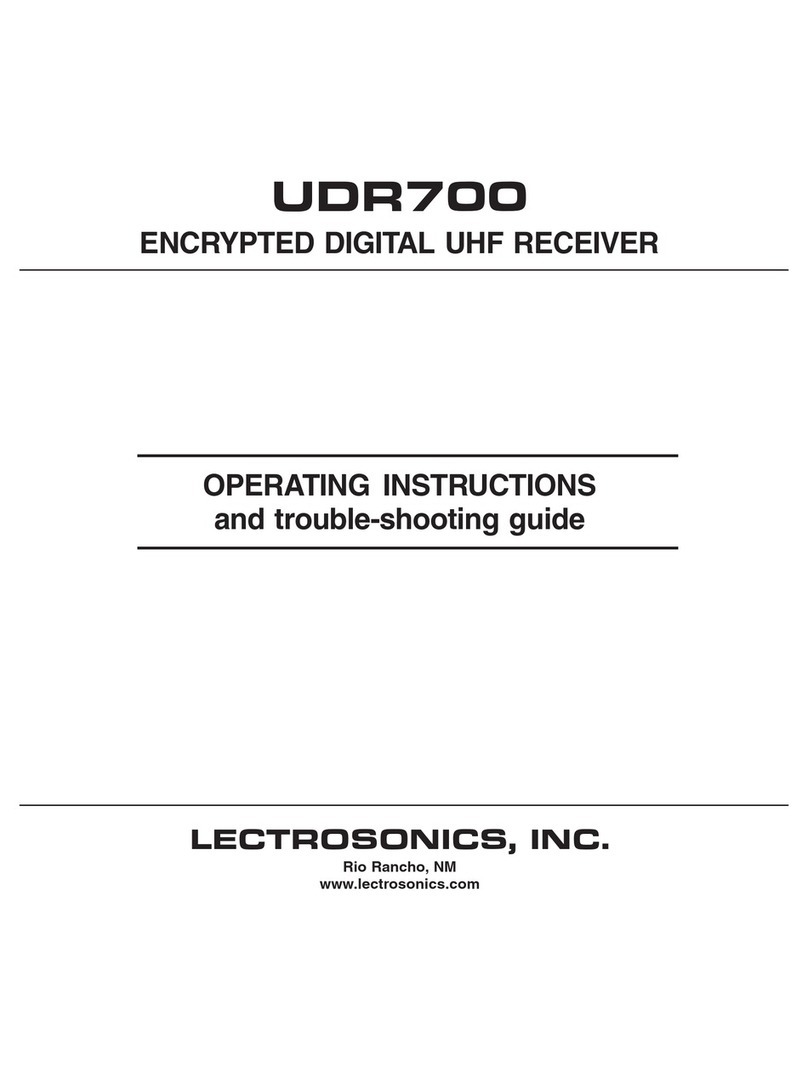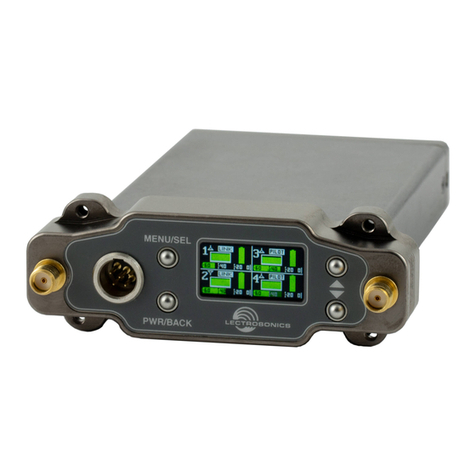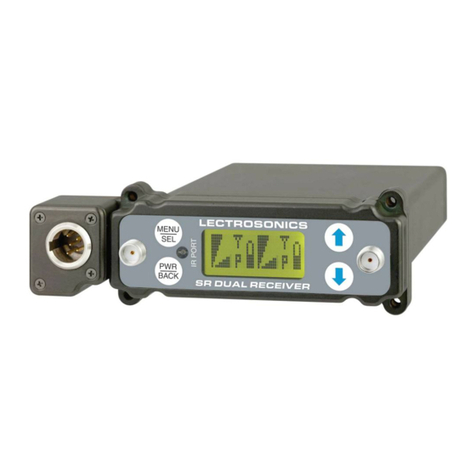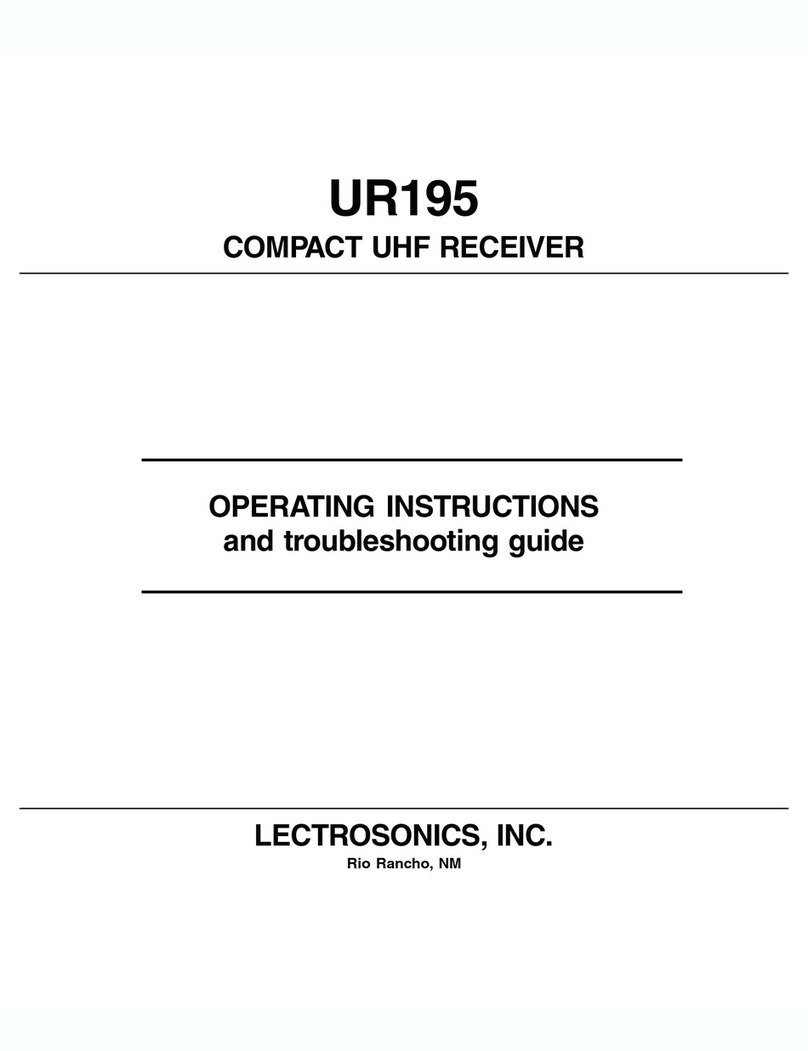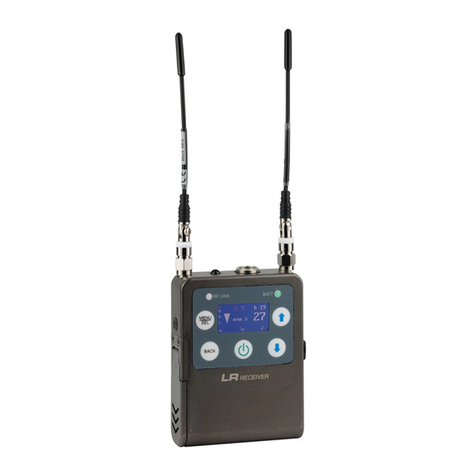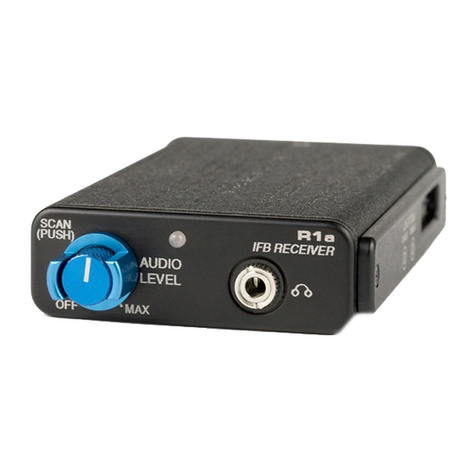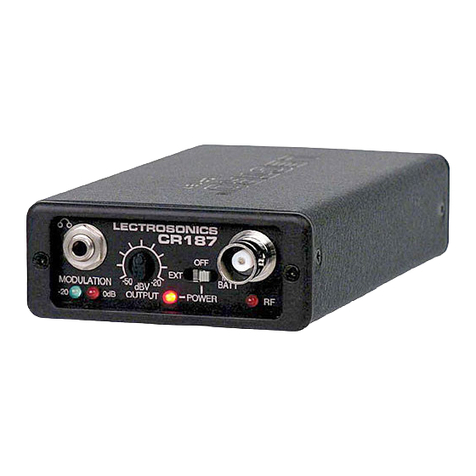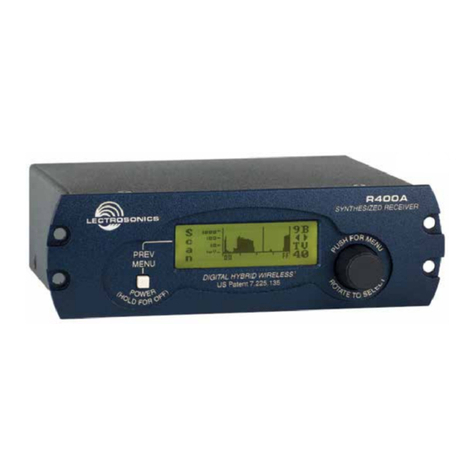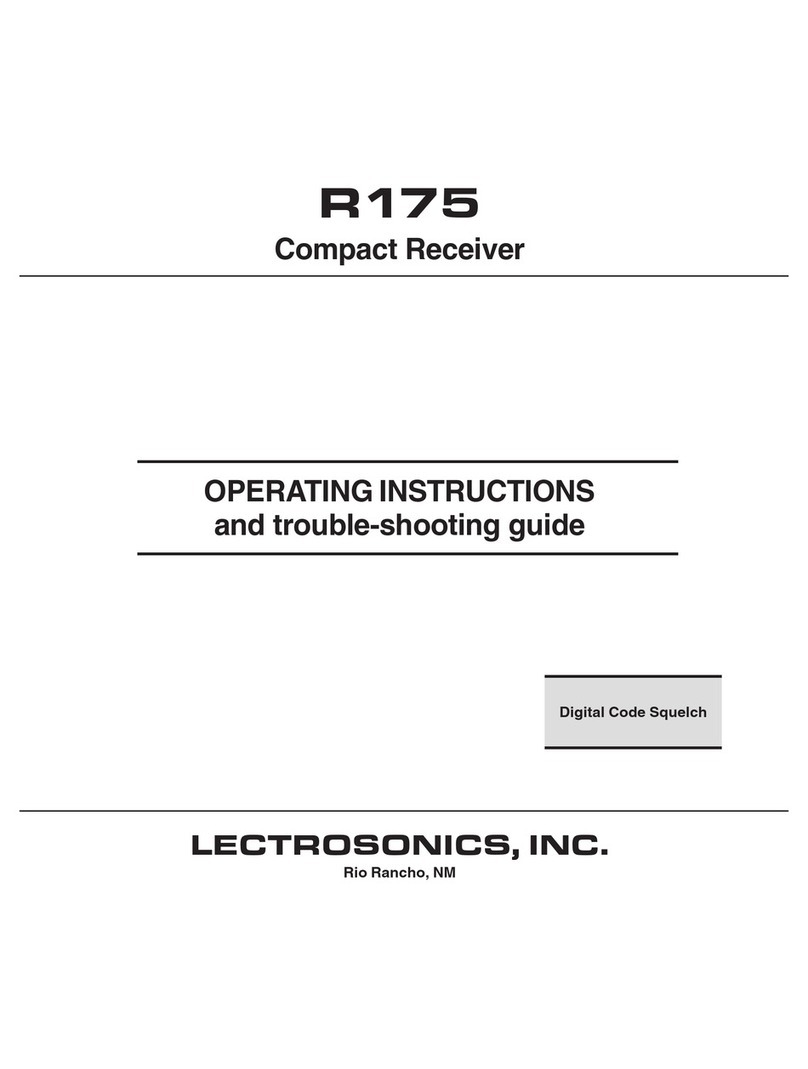
4
The problem of frequency agility is further compounded
when you realize that frequency changes “on the fly”
cannot be made on any type of wireless system. For
example, if there is suddenly an interference problem with
a system in use, on stage for instance, a frequency
change cannot be made without interrupting the program.
Basically, the show must go on. In multichannel applica-
tions, changing the frequency of one system will usually
produce all kinds of new intermodulation problems with
the other systems operating in the same location. Fre-
quency agility is not the universal panacea for interfer-
ence problems. It is only another tool and a limited tool at
that. The first line of defense must be the system’s basic
immunity to interference. That required a new look at
frequency agile receiver design.
DOUBLE BALANCED DIODE MIXERS
In all wireless receivers, a mixer is used to convert the
carrier frequency to the IF frequency where most of the
filtering and gain in the receiver takes place. After doing
all the right things in the front end, it would be a shame to
waste the performance with a second rate mixer. In other
designs that is exactly what happens since mediocre
mixers cause more intermodulation problems than medio-
cre front ends. The only solution was a new technology
GaAs mixer having a robust 3rd order of +25dBm. The
mixer in the UCR201 produces output at only the sum and
difference signals, with minimal spurious signals. This
mixer offers a very high overload threshold and a high
degree of isolation between ports. The IF output of this
mixer is at 244 MHz which is unusually high for a wireless
receiver. This high frequency was chosen to increase the
image rejection in the front end to as high or a higher level
than our fixed frequency designs. The mixer is followed
by low noise amplifiers and SAW filters to preserve the
superior RF performance.
SURFACE ACOUSTIC WAVE FILTER
The UCR201 is unique in that it uses a state of the art
SAW filter in the IF section. The SAW filter is the only
filter that can combine sharp skirts, constant group delay,
and wide bandwidth in one filter. Though expensive, this
special type of filter allows us to follow the basic receiver
rule of doing the primary filtering as early as possible, at
as high a frequency as possible and before high gain is
applied to the signal. Since these filters are made of
quartz, they are very temperature stable. Conventional
LC filters at these frequencies don’t begin to perform as
well and in addition would drift unacceptably in the
elevated temperatures of an equipment rack. After
following the rule in a rigorous way, and due to the sharp
filtering action of the SAW filters, the 244MHz signal is
converted to 10.7Mhz and then to the low frequency of
300 kHz. Lots of gain is then applied in a conventional IC
and the signal is then converted to audio. 300 kHz is
very unconventional for a second IF in a wide deviation
(±50 kHz) system. We chose to use 300 kHz to obtain an
outstanding AM rejection figure over a very wide range of
signal strengths and to produce an excellent noise
improvement at low signal strengths (capture ratio). To
use an IF at 300 kHz requires an unusual circuit to
convert the IF to audio.
DIGITAL PULSE COUNTING DETECTOR
The UCR201 receiver uses an advanced digital pulse
detector to demodulate the FM signal, rather than a
conventional quadrature detector. The common problem
with quadrature detectors is thermal drift, particularly
those that operate at higher frequencies like 10.7 MHz.
Though the quadrature detectors may work well at room
temperature, if they are not carefully compensated, they
will produce amplitude changes and audio distortion in the
elevated temperatures of an equipment rack. Some
manufacturers try to get around the problem by tuning
their systems at higher temperatures after they’ve been
on for some time. The end result is a design that is not
within specifications until it warms up.
The UCR201 design presents an elegantly simple, yet
highly effective solution to this age old problem. The
UCR201 detector basically works like this: A stream of
precision pulses is generated at 300kHz locked to the FM
signal coming from the 300 kHz IF section. The pulse
width is constant, but the timing between pulses varies
with the frequency shift of the FM signal. The integrated
voltage of the pulses within any given time interval varies
in direct proportion to the frequency modulation of the
radio signal. Another way of describing it is that as the
FM modulation increases the frequency, the circuit
produces more pulses and as the modulation decreases
the frequency, the circuit produces fewer pulses. More
pulses produces a higher voltage and fewer pulses a
lower voltage. The resultant varying voltage is the audio
signal.
This type of detector eliminates the traditional problems
with quadrature detectors and provides very low audio
distortion, high temperature stability and stable audio
level. The counting detector also adds additional AM
rejection, in addition to the limiting in the IF section. The
amplitude of the pulses is constant, so level differences
in the IF signal do not affect the pulse.
TRI MODE DYNAMIC FILTER
The audio signal is passed through a “dynamic noise
reduction circuit”. The cutoff frequency of this filter is
varied automatically by measuring the amplitude and
frequency of the audio signal and the quality of the RF
signal. The audio bandwidth is held only to that point
necessary to pass the highest frequency audio signal
present at the time. If the RF level is weak, then the filter
becomes more aggressive. This results in a dramatic
reduction of “hiss”at all times. During passages with a
high frequency content, this filter gets completely “out of
the way”and passes the signal with no decrease in high-
